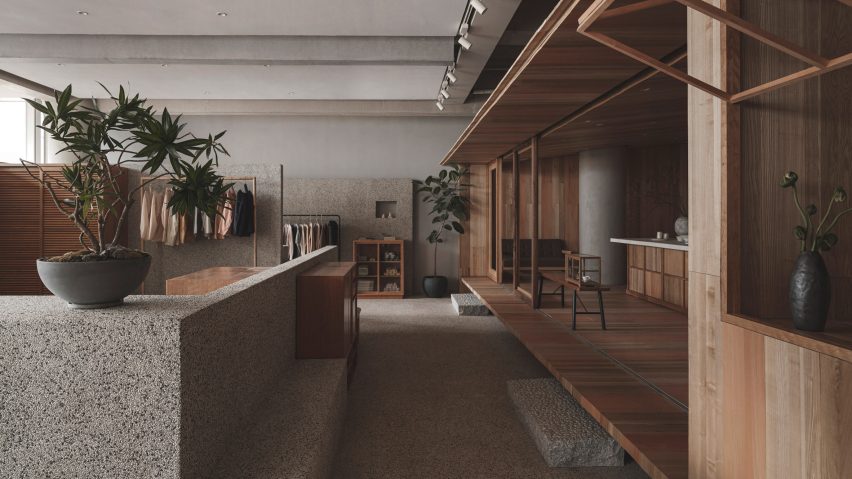
BLUE Architecture Studio inserts rustic cabin into Hangzhou furniture store
Beijing-based BLUE Architecture Studio has erected washed stone partition walls and an entire wooden cabin with a pitched roof inside this store in Hangzhou, China.
Located in the city's mixed-use OōEli complex designed by Renzo Piano, the store belongs to lifestyle brand Lost & Found and sells wooden furniture, homeware, fashion and plants.
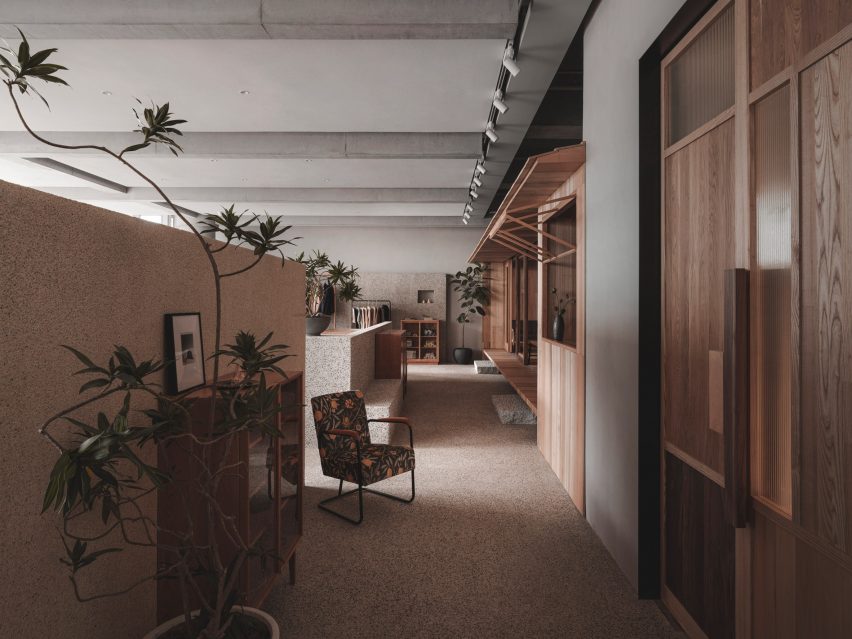
"During this collaboration, we wanted to bring the concept and sense of home into the store, echoing a way of life that cherishes things in daily life," explained BLUE Architecture Studio.
"The spatial design revolves around the materiality of the interior, natural texture and artisan craftsmanship, reflecting Lost & Found's philosophy of art and daily life."
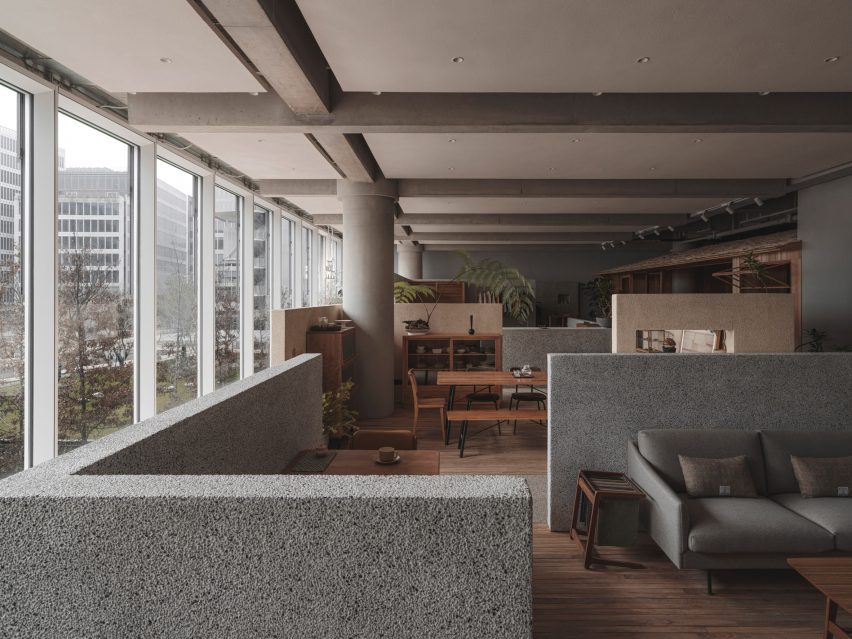
The 225-square-metre store features a neutral palette of washed stone and six types of wood – beech, cherry, oak, walnut, ash and aged poplar.
The interior was divided into an event space and a furniture display area, which in turn was sectioned off into three different sets of rooms using textured-stone partition walls.
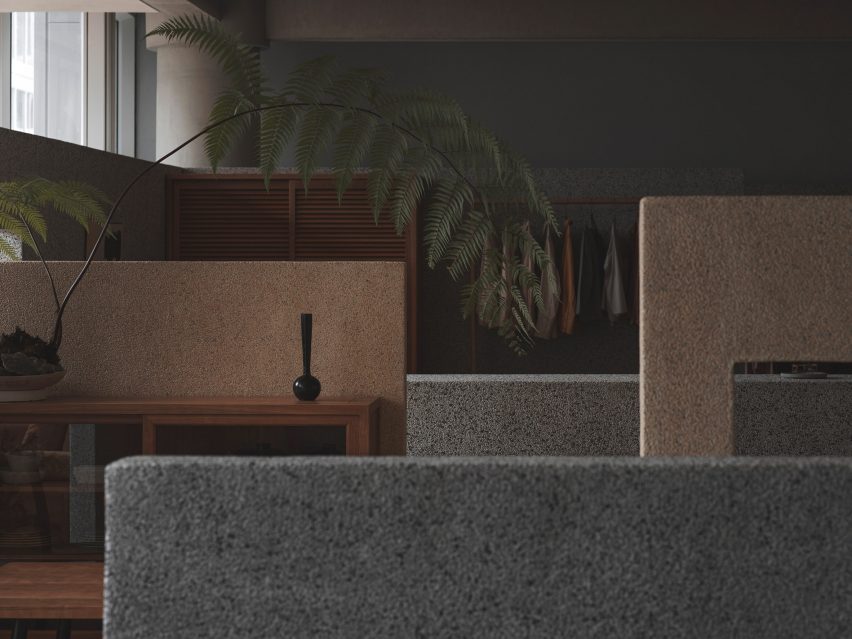
"We intended to enrich the spatial experience in the long display space by inserting semi-enclosed box spaces with different wall heights and therefore making people explore and wander in between the boxes," said the studio.
"The natural and rough texture of the washed stone walls provides a soft and warm atmosphere."
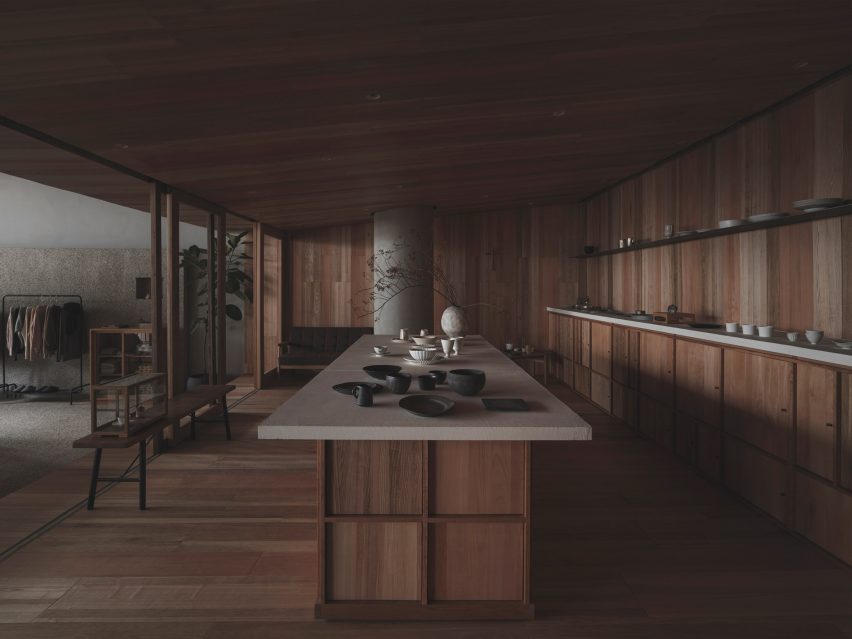
The event space is revealed as customers progress further into the store, in the form of a rustic timber cabin with a pitched roof and wood-frame sliding doors.
The cabin was designed to appear "cosy and relaxed" – as if it has been transplanted into the store from Hangzhou's tea fields.
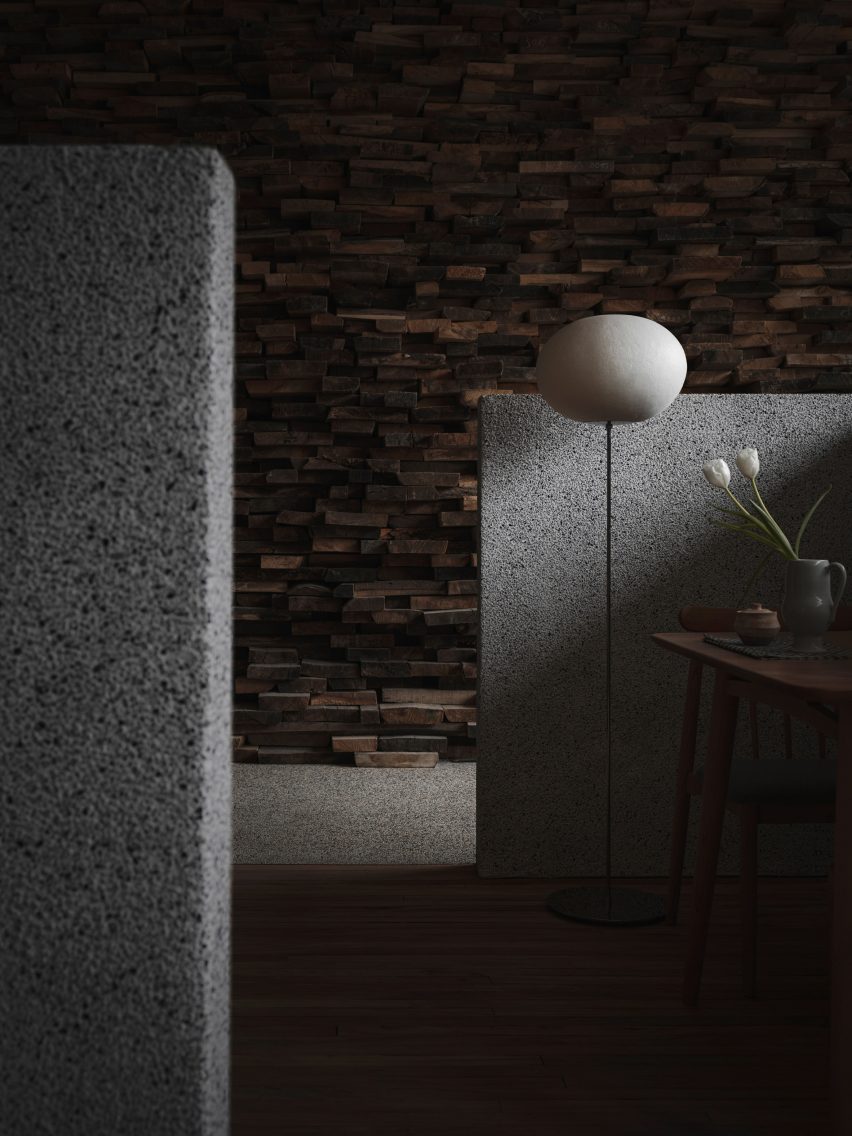
Accessed from the display space via two stone steps, the cabin, which is made from five different kinds of wood, accommodates store events and temporary exhibition projects.
"The blend of different wood types extends to the detailed design of the wood sliding doors and the entrance of the store," said BLUE Architecture Studio.
"Through the use of solid wood, we attempt to form a dialogue with the brand's furniture collection," the studio added.
"The natural texture of the wood imparts a sense of warmth and tenderness to the space."
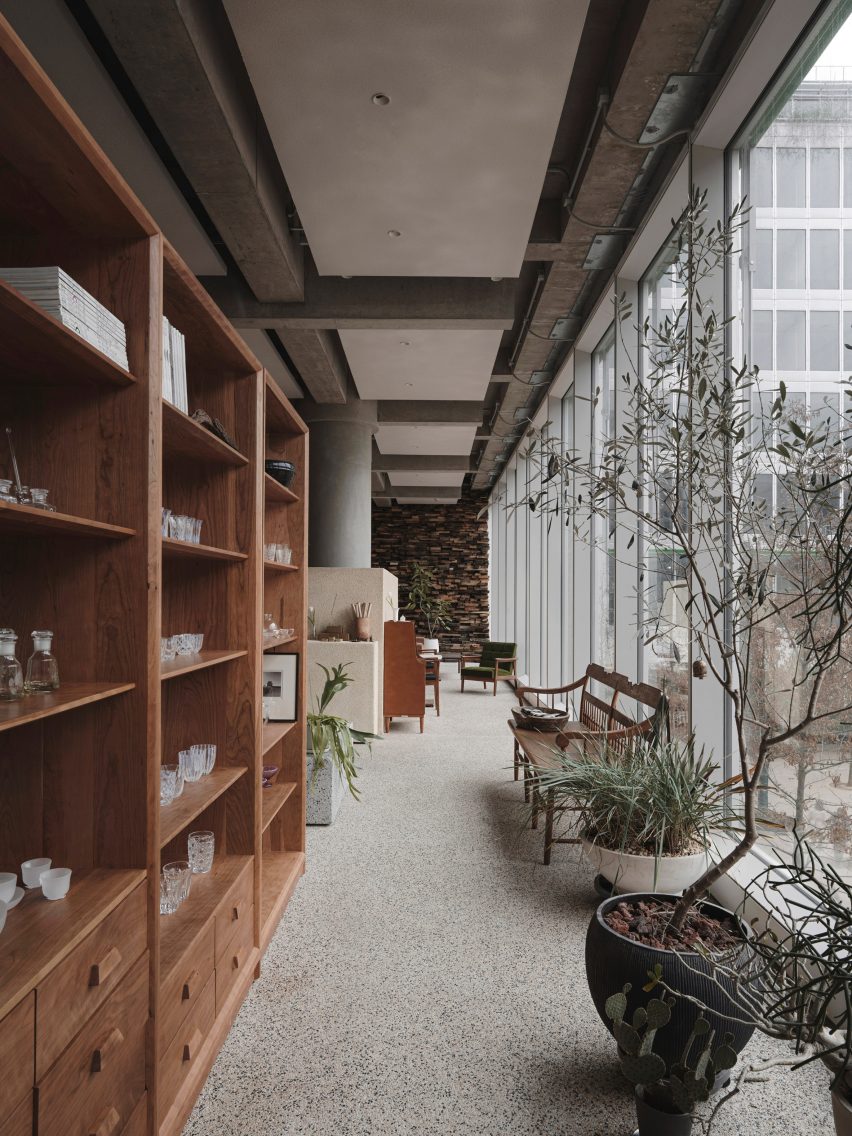
At the opposite end of the store, the studio created a wall made from reclaimed poplar planks that were sourced from Lost & Found's factory. It serves as a focal point for the store and can also be used to display small objects.
"The unique texture of the aged wood reflects a trace of time and a sense of familiarity," said the practice.
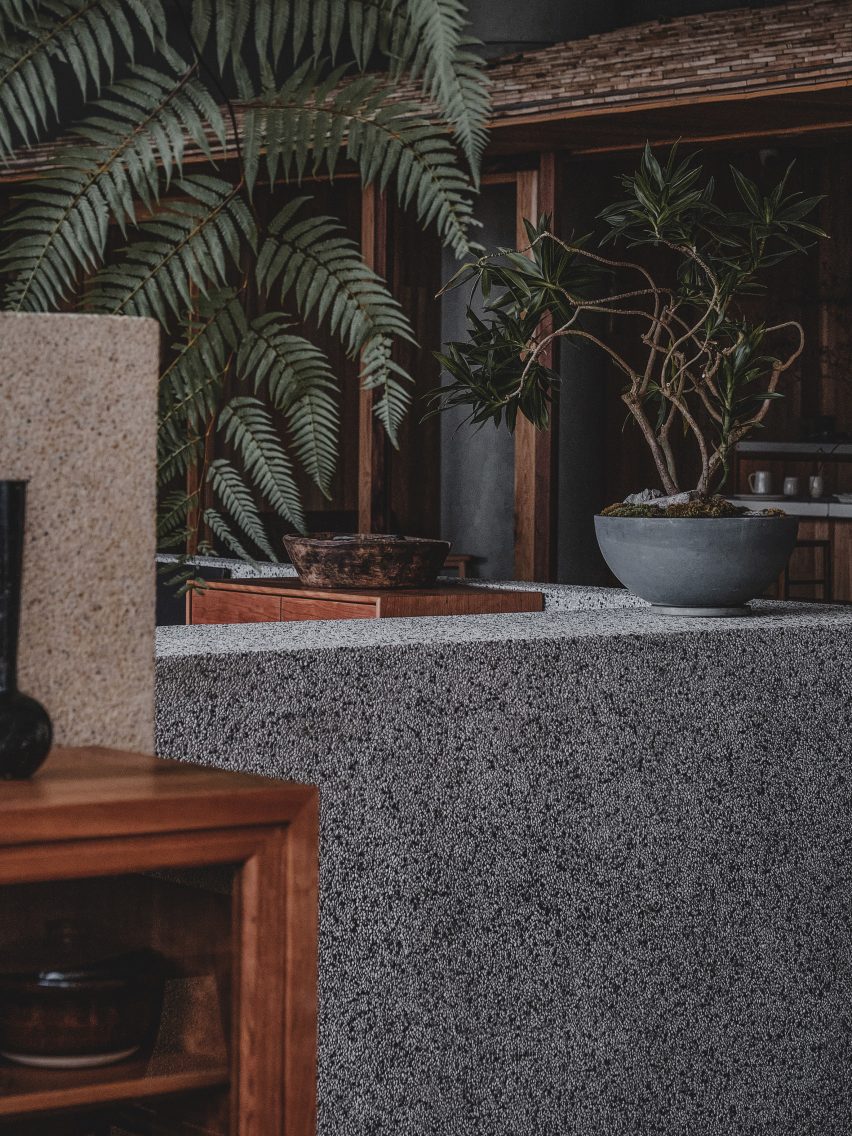
According to Blue Architecture Studio, the large amount of timber used in the interior also helps to permeate the space with the natural scent of wood.
"We believe that a unique sensual experience has the power to bring people back to physical retail space in an age of booming e-commerce platforms," the studio added.
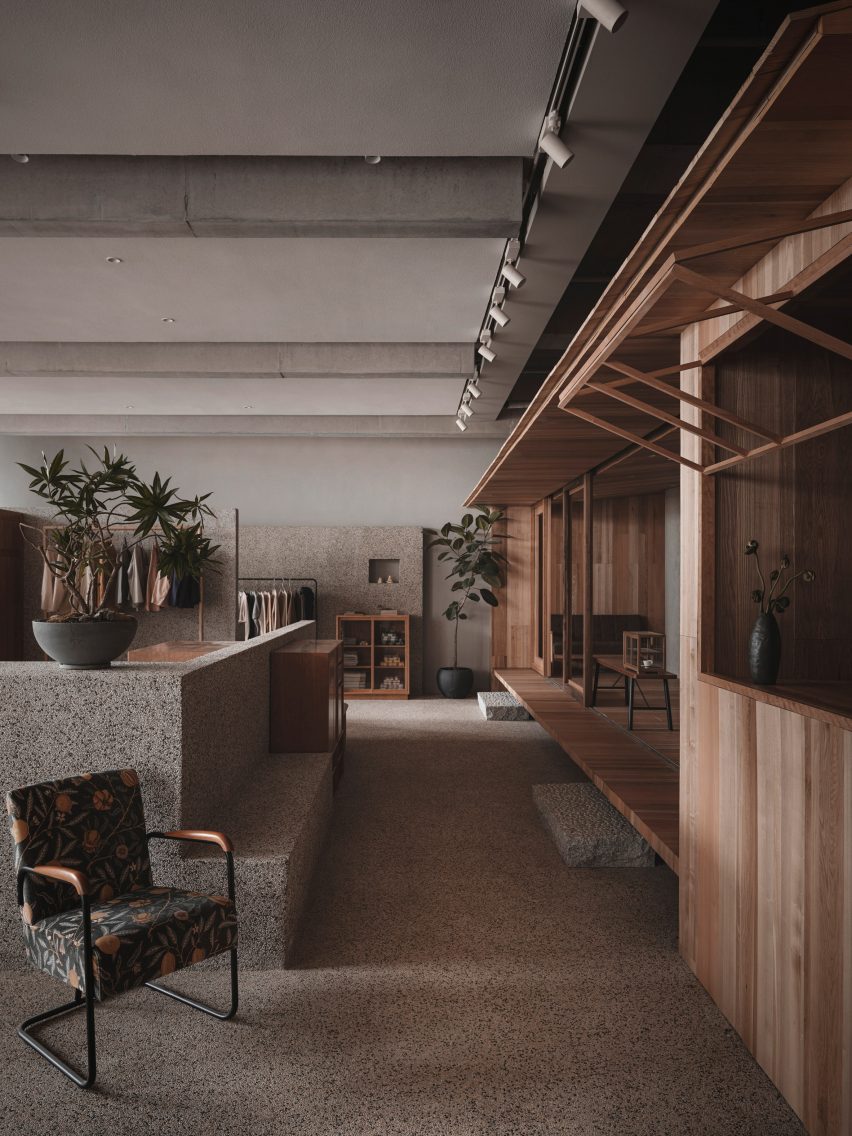
Founded in 2014, Blue Architecture Studio was established in Beijing by Japanese architects Yoko Fujii and Shuhei Aoyama.
Previous projects include Lost & Found's Beijing outpost and the % Arabica shop in Shanghai's Xuhui district, where the firm added a glass box and a courtyard to open the cafe up to the surrounding neighbourhood.
Photography is by Tantan Lei.